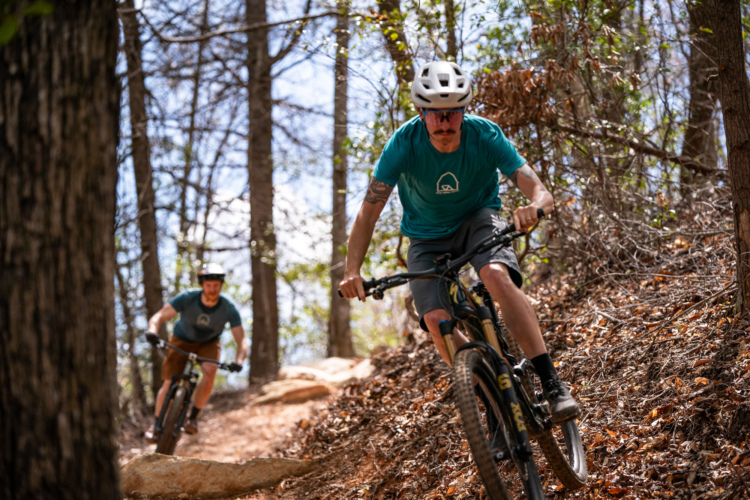
The Stoke is an occasional opinion series highlighting the things that get us stoked about mountain biking. 🤘 👍 👏 🙏
New mountain bikers can be forgiven for thinking that alternative trail lines represent a choice. After all, the very definition of an alternative is one of two or more available options. But I think I speak for core mountain bikers when I say, we’re not here for the 𝔰𝔞𝔩𝔱 𝔏𝔦𝔣𝔢, we’re all about the Alt Life, and life is good.
Look, mountain biking is hard. Oftentimes I forget just how difficult it is, and then I take someone out on a trail ride for their first time. My success rate at converting friends into mountain bikers is approximately zero, with most coming to the conclusion that I’m a damn liar for telling them mountain biking is easy. Apparently it isn’t, and so I stand corrected.
If you think about it, the sport of mountain biking is itself an alternative to a bunch of boring activities like hiking and road biking. Do you own a mountain bike? Congratulations! You’ve bought into an alternative sport, one that seems to be becoming more mainstream by the day but that probably nineteen out of twenty Americans still haven’t tried. If and when they do try mountain biking, I guarantee you they’ll stick to the main trail and avoid the alt lines.
Reading between the (alternative) lines
To be clear, the term “alternative line” isn’t applied consistently from trail to trail. Usually the alt line is the more challenging choice, but sometimes it’s a bypass around a tricky feature. For the purposes of this column I’m talking about the alternative lines that take riders off the main trail just for a moment to experience something extra, whether that be a creative trail feature, a technical challenge, or a wild and overgrown sliver of singletrack.
So why do alternative lines even exist if we’re just supposed to ride them? The answer is that because most mountain bike trails in the U.S. are built on public land, leaders at all levels, from the county to the federal government, demand a broadly appealing end product for their constituents.
“They want to bring as many people as possible, they want that trail that’s going to meet 80% of the riders’ needs, and encourage those people to come and shop and stay,” Gary Moore, the Executive Director of the Colorado Mountain Bike Association, told me in a podcast interview last year. “It is tough particularly at the upper end of the [skills] scale, because it tends to be really hard to create that experience that is sustainable and maintainable. And that also becomes a tougher sell for land managers” who tend to be risk averse.
Not that there’s anything wrong with accessible trails for all. Hell, we need more of them! This isn’t an either/or situation, this is yes, and. Bureaucrats are satisfied, and mountain bikers ride.
Trail builders are a creative bunch, and alternative lines work as a pressure relief valve from blandates to create milquetoast trails. It’s not surprising then that the alt routes are where riders will find the most creative, the most challenging, and the most fun sections to ride.
The thing is, even the most alt of alt lines is low consequence by design. Riders are rarely off the main trail for very long, and even when the alt turns out to be a nope, all we’ve lost is a little time backtracking and a smidge of pride.
The more likely scenario, however, is that we’ll encounter a slightly more challenging line, one that we can use to build skills and confidence ride after ride. Biking a full-on, black-diamond trail requires commitment. Biking a blue or green trail with bits of black diamond dust sprinkled here and there is the recipe for progression.
Now admittedly, I don’t always ride the alt line. Sometimes I’m too tired and sometimes I talk myself out of it because the line might be too difficult. And yet, I nearly always regret my decision to roll past the alternative. I’ve learned that if there’s ever a time to lean into FOMO, it’s the moment I spot the sign for the alt line. In trails, as in life, we never know what awaits us around the next bend. And we’ll certainly never find out if we don’t give things a try.
So I say leave the main trail to the first timers, the bike renters, and the uncommitted. The Alt Life is not meant to be a life of leisure, and the stoke we get from giving our all is what this is all about!





















3 Comments
Oct 12, 2023
Oct 12, 2023
Oct 12, 2023